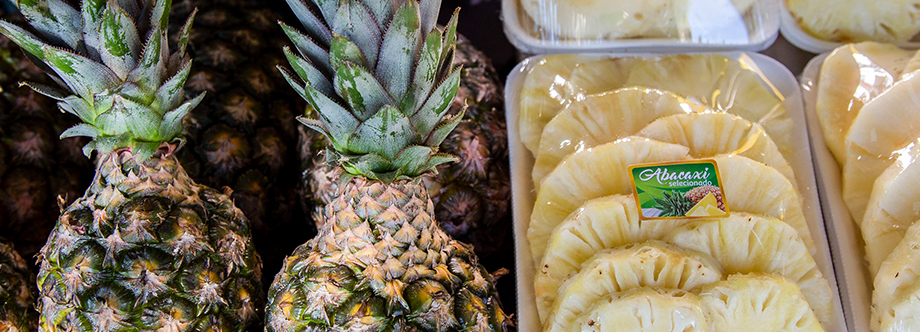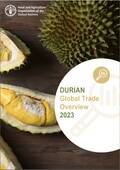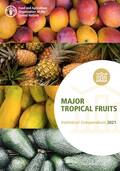Commodity in focus
Global trade in tropical fruits has expanded to unprecedented heights in recent years, reaching an aggregate export volume of close to 8 million tonnes in 2019. Strong demand growth in key importing countries has supported ample investments in productivity improvements and area expansion in supplying countries, notably for avocados.
Takeaways:
| An estimated 99 percent of tropical fruit production originates in developing countries, predominantly in Asia and Latin America, and a smaller share in Africa. |
| In most producing zones, tropical fruits continue to be cultivated at the subsistence rather than commercial level. |
| Regarding the four major tropical fruits, combined exports represent only some 5 percent of total production volume, with the remainder destined for domestic utilization. |
| The impact of the COVID-19 pandemic threatens to cause severe disruptions to global tropical fruit supply and smallholder livelihoods. |
Did you know?
- With around 2 700 species, tropical fruits are a source of nutrition, but also of income generation for those farmers involved in production for export.
- In global commodity trade, tropical fruits constitute a comparatively new group, having emerged as significant in the international marketplace since 1970.
- Export volumes of fresh tropical fruits have displayed the fastest average annual growth rates among internationally traded food commodities.
- Advances in transportation, trade agreements and shifting consumer preferences in favour of these fruits have supported trade growth.
- Given the highly perishable nature of tropical fruits in production and in distribution, environmental challenges are among the key obstacles to sustaining production and ensuring international markets are supplied.
- Increasingly erratic weather events are a particularly acute challenge since the vast majority of tropical fruits are produced on smallholder farms of less than 5 ha, and where cultivation is highly dependent on rainfall.
Featured Resources
-
Major Tropical Fruits Market Review - Preliminary Results 2023
Published: January 2024
-
Strengthening the resilience of agricultural supply chains
The case of fresh fruits and vegetablesPublished: August 2023
-
OECD-FAO Agricultural Outlook 2023-2032
Bananas and Major Tropical Fruits - Outlook included in Other Products sectionPublished: July 2023
-
Durian Global Trade Overview 2023
Published: November 2023
-
Major Tropical Fruits. Market Review 2022
Published: August 2023
-
Major Tropical Fruits - Preliminary results 2022
Published: January 2022
-
Major Tropical Fruits - Statistical Compendium 2021
Published: October 2022
-
Major Tropical Fruits: Market review 2021
Published: September 2022
-
Major Tropical Fruits: Preliminary results 2021
Published: May 2022
-
Major tropical fruits - Market Review 2020
Published: October2021
-
Major tropical fruits - Statistical Compendium 2020
Published: October 2021
-
OECD-FAO Agricultural Outlook 2023-2032
Published: July 2023
-
Food Outlook – Biannual Report on Global Food Markets
Published: June 2023
-
Major Tropical Fruits Market Review February 2020 snapshot
Published: February 2020
-
Major Tropical Fruits Statistical Compendium
Published: September 2020
-
Banana Fusarium Wilt Tropical Race 4: A mounting threat to global banana markets?
Published: November 2019




















